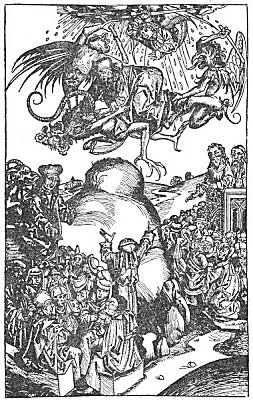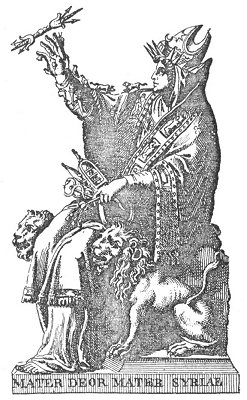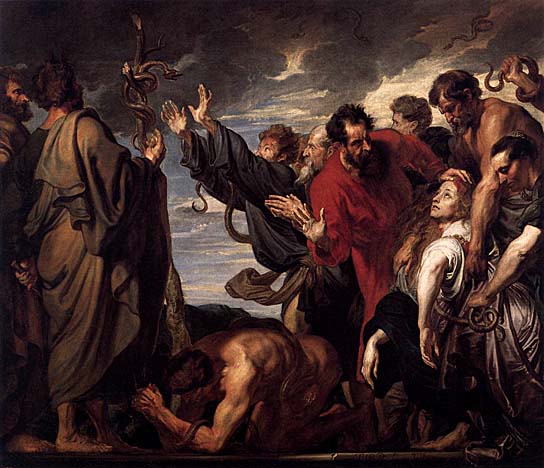The mystics of Eleusis also laid stress upon the evil of suicide, explaining that there was a profound mystery concerning this crime of which they could not speak, but warning their disciples that a great sorrow comes to all who take their own lives. This, in substance, constitutes the esoteric doctrine given to the initiates of the Lesser Mysteries. As the degree dealt largely with the miseries of those who failed to make the best use of their philosophic opportunities, the chambers of initiation were subterranean and the horrors of Hades were vividly depicted in a complicated ritualistic drama. After passing successfully through the tortuous passageways, with their trials and dangers, the candidate received the honorary title of Mystes. This meant one who saw through a veil or had a clouded vision. It also signified that the candidate had been brought up to the veil, which would be torn away in the higher degree. The modern word mystic, as referring to a seeker after truth according to the dictates of the heart along the path of faith, is probably derived from this ancient word, for faith is belief in the reality of things unseen or veiled.
The Greater Mysteries (into which the candidate was admitted only after he had successfully passed through the ordeals of the Lesser, and not always then) were sacred to Ceres, the mother of Persephone, and represent her as wandering through the world in quest of her abducted daughter. Ceres carried two torches, intuition and reason, to aid her in the search for her lost child (the soul). At last she found Persephone not far from Eleusis, and out of gratitude taught the people there to cultivate corn, which is sacred to her. She also founded the Mysteries. Ceres appeared before Pluto, god of the souls of the dead, and pleaded with him to allow Persephone to return to her home. This the god at first refused to do, because Persephone had eaten of the pomegranate, the fruit of mortality. At last, however, he compromised and agreed to permit Persephone to live in the upper world half of the year if she would stay with him in the darkness of Hades for the remaining half.
The Greeks believed that Persephone was a manifestation of the solar energy, which in the winter months lived under the earth with Pluto, but in the summer returned again with the goddess of productiveness. There is a legend that the flowers loved Persephone and that every year when she left for the dark realms of Pluto, the plants and shrubs would die of grief. While the profane and uninitiated had their own opinions on these subjects, the truths of the Greek allegories remained safely concealed by the priests, who alone recognized the sublimity of these great philosophic and religious parables.
Thomas Taylor epitomizes the doctrines of the Greater Mysteries in the following statement: “The Greater (Mysteries) obscurely intimated, by mystic and splendid visions, the felicity of the soul both here and hereafter when purified from the defilement of a material nature, and constantly elevated to the realities of intellectual (spiritual) vision.”
Just as the Lesser Mysteries discussed the prenatal epoch of man when the consciousness in its nine days (embryologically, months) was descending into the realm of illusion and assuming the veil of unreality, so the Greater Mysteries discussed the principles of spiritual regeneration and revealed to initiates not only the simplest but also the most direct and complete method of liberating their higher natures from the bondage of material ignorance. Like Prometheus chained to the top of Mount Caucasus, man’s higher nature is chained to his inadequate personality. The nine days of initiation were also symbolic of the nine spheres through which the human soul descends during the process of assuming a terrestrial form. The secret exercises for spiritual unfoldment given to disciples of the higher degrees are unknown, but there is every reason to believe that they were similar to the Brahmanic Mysteries, since it is known that the Eleusinian ceremonies were closed with the Sanskrit words “Konx Om Pax.”
That part of the allegory referring to the two six-month periods during one of which Persephone must remain with Pluto, while during the other she may revisit the upper world, offers material for deep consideration. It is probable that the Eleusinians realized that the soul left the body during steep, or at least was made capable of leaving by the special training which undoubtedly they were in a position to give. Thus Persephone would remain as the queen of Pluto’s realm during the waking hours, but would ascend to the spiritual worlds during the periods of sleep. The initiate was taught how to intercede with Pluto to permit Persephone (the initiate’s soul) to ascend from the darkness of his material nature into the light of understanding. When thus freed from the shackles of clay and crystallized concepts, the initiate was liberated not only for the period of his life but for all eternity, for never thereafter was he divested of those soul qualities which after death were his vehicles for manifestation and expression in the so-called heaven world.

Moe is the founder of GnosticWarrior.com. He is a father, husband, author, martial arts black belt, and an expert in Gnosticism, the occult, and esotericism.





